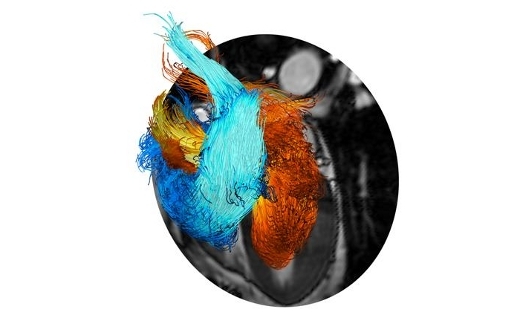Visualization Highlight: ERC Starting Grant: HEART4FLOW

The objective of the HEART4FLOW project is to develop the next generation of methods for the non-invasive quantitative assessment of cardiac diseases and therapies.
The primary purpose of the cardiovascular system is to drive, control and maintain blood flow to all parts of the body. Despite the primacy of flow, cardiac diagnostics still rely almost exclusively on tools focused on morphological assessment. The objective of the HEART4FLOW project is to develop the next generation of methods for the non-invasive quantitative assessment of cardiac diseases and therapies by focusing on blood flow dynamics with the goals of earlier and more accurate detection and improved management of cardiac diseases. The focus is on the assessment of intra-cardiac blood flow dynamics. A user-friendly quantitative assessment approach is obtained, as well as stenotic and regurgitant blood flow. Furthermore, the accuracy, measurement time, and robustness of 4D flow MRI acquisition are optimised, allowing its use in large clinical trials.
References
Lantz J, Ebbers T, Engvall J, Karlsson M. (2013) “Numerical and Experimental Assessment of Turbulent Kinetic Energy in an Aortic Coarctation.” J Biomech 2013:46(11):1851-8.
Sengupta PP, Pedrizzetti G, Kilner PJ, Kheradvar A, Ebbers T, Tonti G, Fraser AG, Narula J. (2012) “Emerging Trends in CV Flow Visualization.” J Am Coll Cardiol Img. 2012;5:305-316.
Markl M, Kilner PJ, and Ebbers T. (2011) “Comprehensive 4D velocity mapping of the heart and great vessels by cardiovascular magnetic resonance.” J Cardiovasc Magn Reson. 13(1): 7.
Fredriksson AG, Zajac J, Eriksson J, Dyverfeldt P, Bolger AF, Ebbers T, Carlhäll CJ. (2011) “4-D Blood Flow in the Human Right Ventricle.” Am J Physiol Heart Circ Physiol 2011;301:H2344-H2350.
Ebbers T. (2011) “Flow Imaging: Cardiac Applications of 3D Cine Phase-Contrast MRI.” Current Cardiovascular Imaging Reports, 4:127–133.




